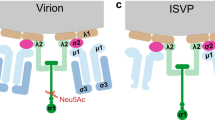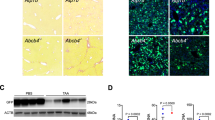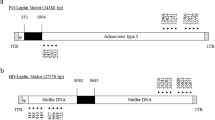Abstract
Studies in cultured cell lines have shown that adenovirus infection involves binding of adenovirus fiber to its cell surface receptor and binding of penton base to αv integrins. However, much less is known about the role of these interactions in cells that are targets for adenovirus-mediated gene transfer. Earlier work showed that hepatocytes are readily infected by adenovirus, making them an attractive target for gene therapy in several diseases. We found that addition of fiber protein blocked adenovirus infection of primary cultures of hepatocytes. This suggests an important role for fiber and its receptor. However, mutation of the integrin-binding motif in penton base did not inhibit infec- tion of hepatocytes, even though the mutation impaired infection of HeLa cells. Hepatocytes had undetectable amounts of αv integrins on their cell surface and showed no specific adherence to vitronectin, the natural substrate of αv integrins. Adenovirus with an intact penton base enhanced infection of liver following intravenous injection, but only by three-fold as compared with virus in which the integrin-binding motif was disrupted. These studies suggest that interactions between cell surface integrins and penton base are not required for adenovirus infection of hepatocytes in vitro, but the interaction enhances infection to a small degree in vivo.
This is a preview of subscription content, access via your institution
Access options
Subscribe to this journal
Receive 6 print issues and online access
$259.00 per year
only $43.17 per issue
Buy this article
- Purchase on SpringerLink
- Instant access to full article PDF
Prices may be subject to local taxes which are calculated during checkout
Similar content being viewed by others
Author information
Authors and Affiliations
Rights and permissions
About this article
Cite this article
Hautala, T., Grunst, T., Fabrega, A. et al. An interaction between penton base and αv integrins plays a minimal role in adenovirus-mediated gene transfer to hepatocytes in vitro and in vivo. Gene Ther 5, 1259–1264 (1998). https://doi.org/10.1038/sj.gt.3300722
Received:
Accepted:
Published:
Issue Date:
DOI: https://doi.org/10.1038/sj.gt.3300722



